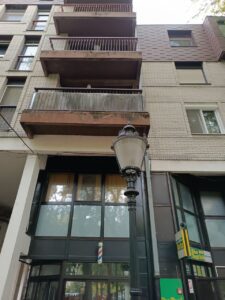Apartments in historic buildings of Subotica: pros and con
Subotica, a picturesque city in northern Serbia, is renowned for its stunning architecture and rich cultural heritage. Among its many attractions are the historic buildings that dot the landscape, many of which have been converted into apartments. Living in these historic structures offers a unique blend of charm and character, but it also comes with its own set of challenges. This article explores the pros and cons of residing in apartments located within Subotica’s historic buildings, providing potential residents with a comprehensive overview of what to expect.
Pros of Living in Historic Buildings
One of the most significant advantages of living in an apartment within a historic building in Subotica is the architectural beauty and character these structures possess. Many of these buildings feature intricate designs, high ceilings, and unique details that are often absent in modern constructions. Residents can enjoy the aesthetic appeal of their surroundings, which can enhance their living experience and provide a sense of pride in their home.
Additionally, historic buildings often come with a rich history that adds to their allure. Living in such a space can provide residents with a connection to the past, allowing them to appreciate the stories and events that have shaped the city. This historical significance can foster a sense of community among residents who share an appreciation for the cultural heritage of Subotica.
Another advantage is the potential for location. Many historic buildings are situated in prime areas of the city, often close to cultural landmarks, parks, and vibrant neighborhoods. This accessibility can enhance the quality of life for residents, offering them easy access to shops, restaurants, and entertainment options. The charm of the surrounding area can also contribute to a more enjoyable living experience.
Cons of Living in Historic Buildings
Despite the many advantages, there are also notable drawbacks to living in historic buildings. One of the primary concerns is the potential for maintenance issues. Older structures may require significant upkeep, including plumbing, electrical, and structural repairs. These issues can lead to higher living costs and may require residents to invest time and money into renovations or repairs that are necessary to maintain the integrity of the building.
Another challenge is the potential for limited space and modern amenities. Many historic apartments may not offer the same level of convenience as newer constructions, such as updated kitchens, bathrooms, or energy-efficient systems. Residents may find themselves compromising on certain comforts or facing challenges in adapting the space to meet contemporary living standards.
Lastly, there may be restrictions imposed by local preservation laws that can limit renovations or modifications to the apartment. While these regulations are in place to protect the historical integrity of the building, they can also frustrate residents who wish to personalize their living space. This can lead to a feeling of constraint, particularly for those who value modern design and functionality in their homes.
In conclusion, apartments in historic buildings of Subotica offer a unique living experience that combines charm, history, and prime location. However, potential residents should carefully weigh the pros and cons before making a decision. While the aesthetic appeal and cultural significance of these apartments can be enticing, the challenges of maintenance, limited modern amenities, and potential restrictions should not be overlooked. Ultimately, the choice to live in a historic building should align with one’s lifestyle preferences and willingness to embrace the intricacies of living in a piece of history.



